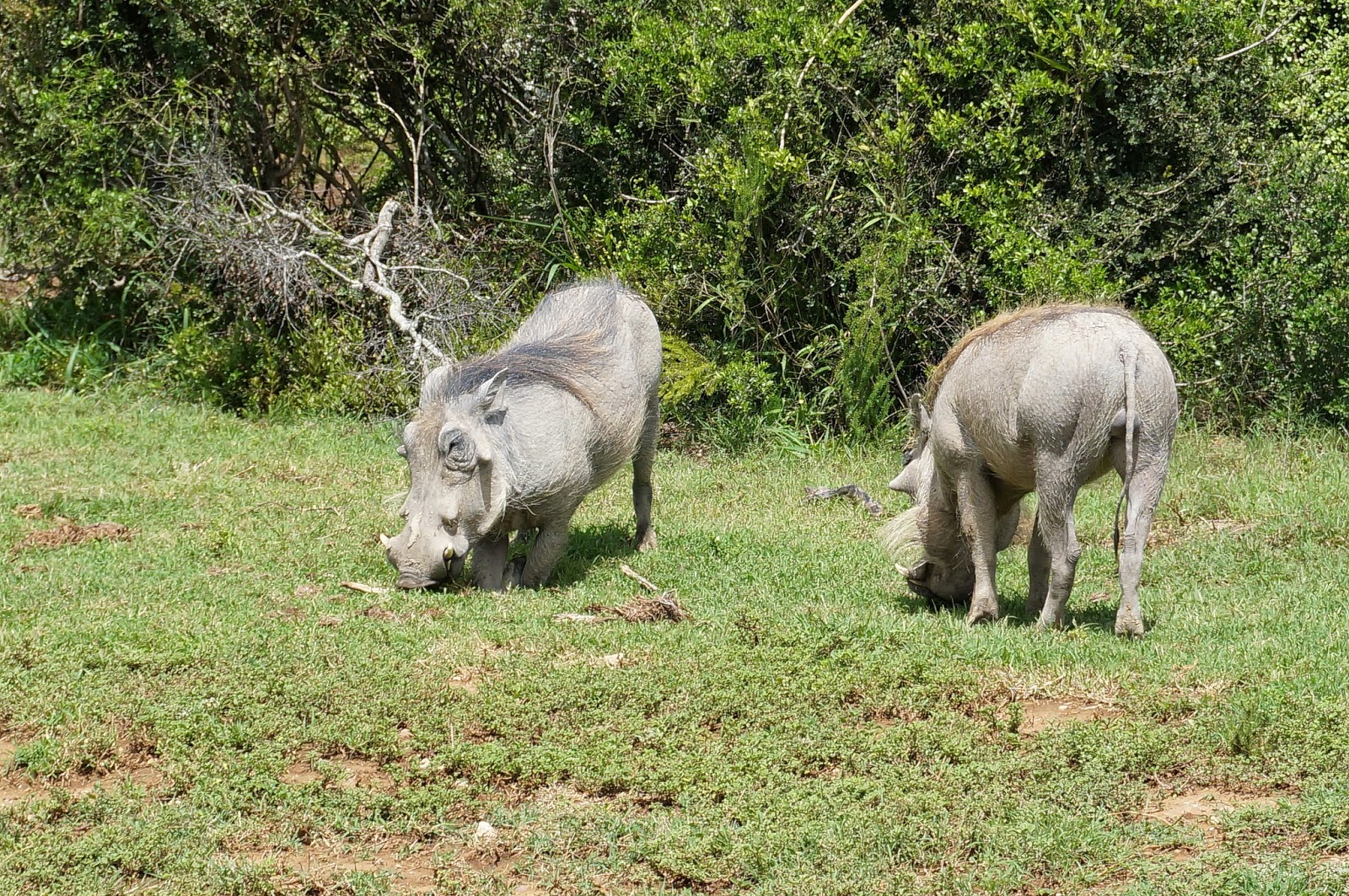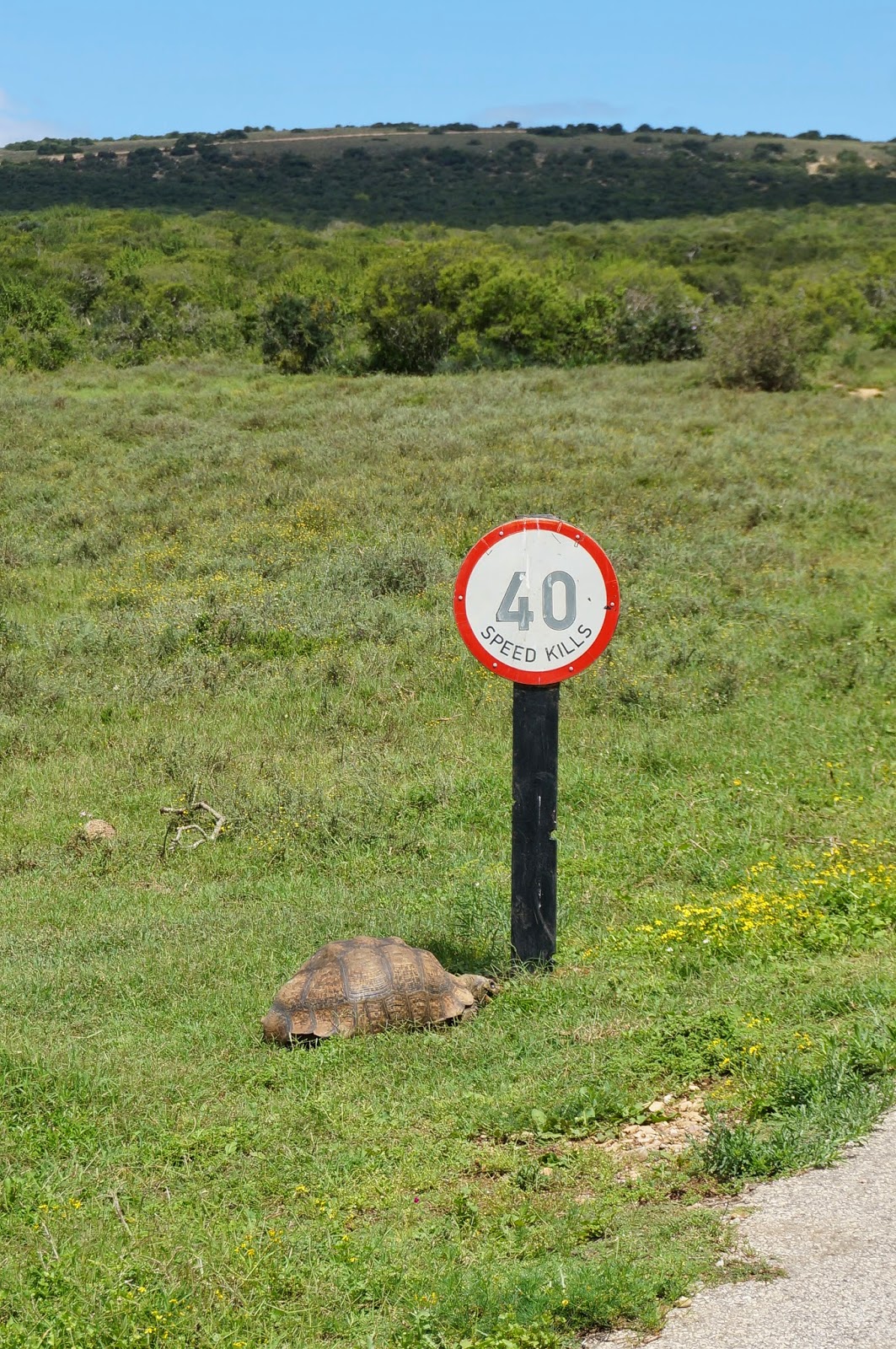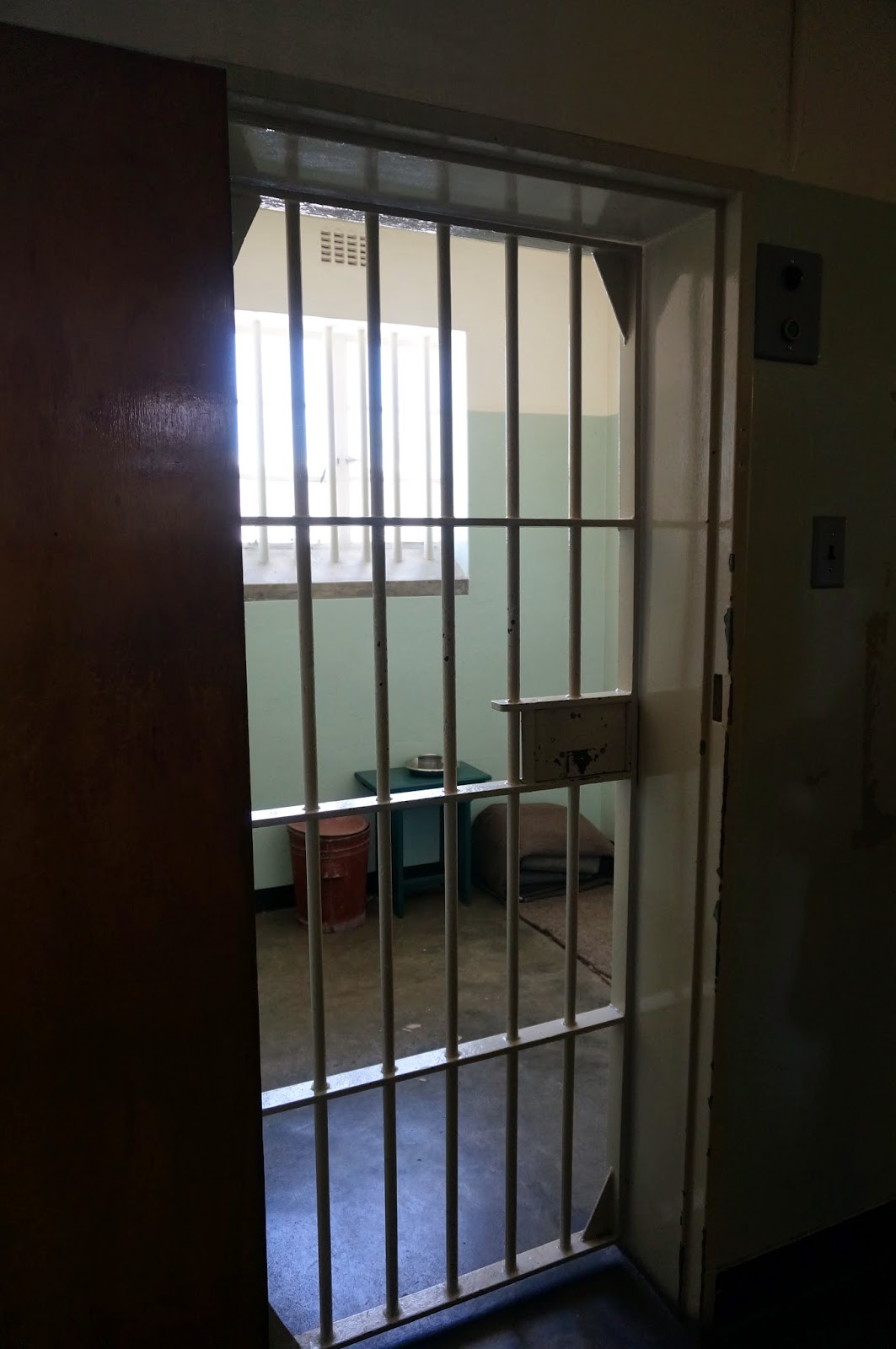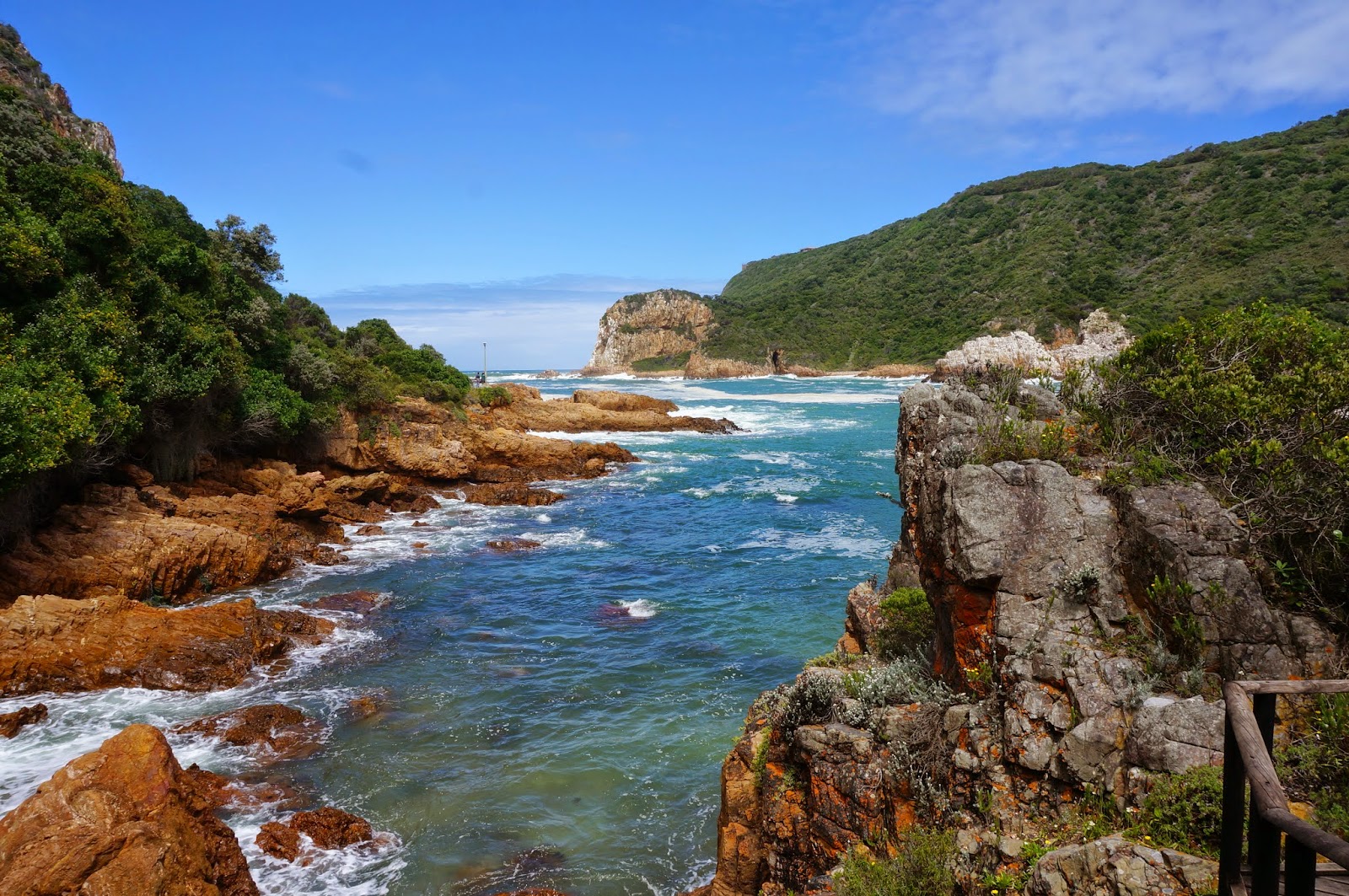 |
| "Everything the light touches is our kingdom." |
 |
| Some Red Hartebeest grazing in the grass. |
 |
| A grazing zebra. |
 |
| Some antelope dashing across the road behind our van. I tried to identify what kind they were, but the internet has failed me. |
 |
| A Caracal roaming through the bush - an extremely rare sight because they are mostly nocturnal and very reclusive. |
 |
| A Warthog giving us some side-eye. |
 |
| More Warthogs - the reason for the difference in color is the different color mud/dirt that they roll around in to protect themselves from the intense African sun. |
 |
| A Meerkat perched on a small tree to watch out for predators. It was really interesting to watch them run around the ground and go in and out of their burrows. |
 |
| This crazy skinny bird - I have no idea what species it is but I liked it anyway. |
 |
| A Tortoise - oh the irony! |
 |
| We had no trouble finding these guys though! The place is called Addo Elephant Park after all... |
 |
| These massive creatures never cease to amaze me - here you can see the male elephant's fifth leg. |
 |
| A baby elephant! This one was in the same little herd as the elephant with the tracking device on it's head. |
 |
| Various wildflowers and foliage growing in the forest. |
 |
| A wild cockroach appears! I have never seen so many cockroaches in my life as I have in Africa/ |
 |
| A millipede crawling along the hiking trail - there were lots of these guys in the forest too. |
 |
| A forest mushroom pooled with rain water. |
 |
| More mushrooms - but these ones are fun colors! |
 |
| But the forest wasn't all bugs and fungus - there were also some beautiful and interestingly-shaped wildflowers. |
 |
| These flowers came in all different colors. |
 |
| A lizard crawling on a rock near the Heads. |
 |
| At the base of the heads there are loads of little tidal pools and rock formations to climb over and explore. |
 |
| Some mussels living on the rocks + the shadow of my head. |
 |
| A small snail making his way over a rock above one of the tidal pools. |
 |
| Not really sure what these things are but they are definitely alive - they had these little fins that came out of their "shells" that I presume is used to sift through the water for food particles. |
 |
| Not really sure what this is either but it is definitely alive - I think it's like a marine plant. |
 |
| The beach was huge and especially striking against the backdrop of the local mountains in the distance. |
 |
| A jellyfish which had died and washed up on shore. We touched the top of it since the stinging part is underneath the "head" - it was a little harder than I expected but still squishy. |
 |
| The sunset over the Indian Ocean - absolutely breathtaking! |
 |
| The view of the bay in Hermanus - my last stop along the Garden Route before Cape Town. Hermanus is most famous for the ability to see whales surfacing and breachcing directly from shore. |
 |
| There was a nice walking trail along the entirety of the waterfront which was perfect taking in the scenery and to be on the lookout for whales. |
 |
| A lizard I encountered which was sunning itself along the waterfront. |
 |
| I also came across a turtle on the side of the walking path - when I passed by he tried to stay motionless but I saw him regardless. Silly turtle. |
 |
| The shore here also had lots of tidal pools with sea anemone and other cool creatures. |
 |
| Starfish! |
 |
| Some sort of shore-dwelling bird perched atop the rocks. |
 |
| At first glance this may look like just a shot of the ocean, but look closer....there is a little rock dassie sunning itself on the side of the cliff. |
 |
| After I walked for a bit along the shore I stopped at a little cafe to sit outside for some lunch. This little birdie kept flitting around the table looking for little crumbs so I snapped a picture. |
 |
| The bay of Hermanus at dusk - someone told me once that dawn and dusk are the best times to see whales but I can't actually verify that because I saw them during midday too. |
 |
| Ahoy, it's a whale! Do you see the little spray of mist directly to the left of the lighthouse jutting out into the water? Definitely a whale. |
 |
| The last good picture of the whale that I have - it's the black spot just above the white sea foam floating in the water. |
 |
| After Hermanus it was off to the "Mother City" - Cape Town! (This is the view of the city bowl from atop Lion's Head - one of three hiking peaks surrounding the city - but more on that later) |
 |
| More shots of the Urban Farm - plus the stunning backdrop of Devil's Peak (on the left) and Table Mountain (on the right). |
 |
| "The future is organic" |
 |
| This tree was enormous - I can't even imagine how old it must be! The gardens had tons of these ancient trees and locals and tourists alike were shading themselves under their massive branches. |
 |
| An Egyptian Goose splashing around a statue of an otter - if only it were real then this would be an awesome shot. |
 |
| Splish-splash in the bath. |
 |
| Can you tell I really liked taking pictures of this Egyptian Goose? I thought is was just so beautiful and it hung around this pond without the slightest regard for what us humans were doing. |
 |
| Sashay away. |
 |
| Not only were the plants beautiful but the backdrop was just stunning - being from Michigan I am not accustomed to seeing mountains and these ones are just spectacular. |
 |
| This one was called the fairy tree and it certainly looks like something out of a fairytale. |
 |
| The flowers and the trees were all so colorful and there was interesting artwork scattered throughout the gardens. |
 |
| Looking out over Cape Town. (That's Robben Island on the right - but more on that later) |
 |
| AHHHHH! A GIANT BEETLE IS ATTACKING THE CITY! |
 |
| The 12 Apostles at sunset - simply gorgeous. |
 |
| The City Bowl at sunset - I couldn't believe all the colors. |
 |
| The view of Cape Town from the bay. |
 |
| Bob and I decided to take a trip to the Robben Island Museum for the day to learn more about Apartheid and to see the place where Nelson Mandela was held for 18 of his 27 year imprisonment. |
 |
| One of the cell blocks for the political prisoners. |
 |
| This was Nelson Mandela's Cell - a humbling experience to say the least. |
 |
| Obligatory sign picture - from left to right that's David (Germany), Lea (Switzerland), and Ella (UK). |
 |
| This is the New Cape Point Lighthouse - it's location is much better for safe maritime navigation. |
 |
| The wind was really good for one thing though - windsurfing! These guys were really good at it and it looked like a lot of fun - new bucket list item perhaps? |
 |
| The waters off the coast were just such amazingly blue colors. |
 |
| I imagine this penguin to be crowing - but like, what sound does a penguin actually make? The world may never know. |
 |
| I believe I can fly I believe I can touch the sky I think about it every night and day Spread my wings and fly away |
 |
| They began grooming each other and it was really adorable. |
 |
| This is how I spend my Thanksgiving - on a wine tasting tour of the wineries near Stellenbosch! Copious amounts of wine is an acceptable substitute for turkey, right? |
 |
| The scenery and the wines were simply amazing. |
 |
| In addition to tasting we were given a tour of the wineries to see how it is distilled - I for the life of me can't remember any of it but these big vats were pretty cool. |
 |
| I'd kill to have a wine cellar that looked like this. |
 |
| I loved this shot for some reason - I think it's the retro colors. |
 |
| That does it for all my pictures from South Africa! Off to the next great world adventure! |







































Haven't been to Africa but seeing these photos seemed like I partly travelled Africa somehow. Nice photos!
ReplyDeleteThis comment has been removed by the author.
ReplyDeleteAwww memories...your blog made me smile Tyler! I found your card tucked away in one of my journals and was excited to find out where you went to next. Hope you are well, enjoying your awesome adventure and experiencing life changing encounters wherever you are. It was nice meeting you while in Cape Town ;)
ReplyDeleteCindy